Country
Crash of a McDonnell Douglas MD-83 in Lagos: 159 killed
Date & Time:
Jun 3, 2012 at 1545 LT
Registration:
5N-RAM
Survivors:
No
Schedule:
Abuja - Lagos
MSN:
53019/1783
YOM:
1990
Flight number:
DAV992
Crew on board:
6
Crew fatalities:
Pax on board:
147
Pax fatalities:
Other fatalities:
Total fatalities:
159
Captain / Total hours on type:
7466.00
Copilot / Total hours on type:
808
Aircraft flight hours:
60850
Aircraft flight cycles:
35220
Circumstances:
On 3rd June, 2012 at about 1545:00hrs, 5N-RAM, a Boeing MD-83, a domestic scheduled commercial flight, operated by Dana Airlines (Nig.) Limited as flight 0992 (DANACO 0992), crashed into a densely populated area of Iju-Ishaga, a suburb of Lagos, following engine number 1 loss of power seventeen minutes into the flight and engine number 2 loss of power while on final approach to Murtala Muhammed Airport Lagos, Nigeria. Visual Meteorological Conditions prevailed at the time and the airplane was on an instrument flight plan. All 153 persons onboard the airplane, including the six crew were fatally injured. There were also six confirmed ground fatalities. The airplane was destroyed. There was post impact fire. The flight originated at Abuja (ABV) and the destination was Lagos (LOS). The airplane was on the fourth flight segment of the day, consisting of two round-trips between Lagos and Abuja. The accident occurred during the return leg of the second trip. DANACO 0992 was on final approach to runway 18R at LOS when the crew declared a Mayday call “Dual Engine Failure – negative response from the throttles.” According to records, the flight arrived ABV as Dana Air flight 0993 at about 1350:00hrs and routine turn-around activities were carried out. DANACO 0992 initiated engine start up at 1436:00hrs. Abuja Control Tower cleared the aircraft to taxi to the holding point of runway 04. En-route ATC clearance was passed on to DANACO 0992 on approaching holding point of runway 04. According to the ATC ground recorder transcript, the aircraft was cleared to line-up on runway 04 and wait, but the crew requested for some time before lining-up. DANACO 0992 was airborne at 1458:00hrs after reporting a fuel endurance of 3 hours 30 minutes. The aircraft made contact with Lagos Area Control Centre at 1518:00hrs and reported 1545:00hrs as the estimated time of arrival at LOS at cruising altitude of 26,000 ft. The Cockpit Voice Recorder (CVR) retained about 30 minutes 53 seconds of the flight and started recording at 1513:44hrs by which time the Captain and First Officer (F/O) were in a discussion of a non-normal condition regarding the correlation between the engine throttle setting and an engine power indication. However, they did not voice concerns then that the condition would affect the continuation of the flight. The flight crew continued to monitor the condition and became increasingly concerned as the flight transitioned through the initial descent from cruise altitude at 1522:00hrs and the subsequent approach phase. DANACO 0992 reported passing 18,100ft and 7,700ft, at 1530:00hrs and 1540:00hrs respectively. After receiving radar vectors in heading and altitude from the Controller, the aircraft was issued the final heading to intercept the final approach course for runway 18R. According to CVR transcript, at 1527:30hrs the F/O advised the Captain to use runway 18R for landing and the request was made at 1531:49hrs and subsequently approved by the Radar Controller. The crew accordingly changed the decision height to correspond with runway 18R. At 1531:12hrs, the crew confirmed that there was no throttle response on the left engine and subsequently the Captain took over control as Pilot Flying (PF) at 1531:27hrs. The flight was however continued towards Lagos with no declaration of any distress message. With the confirmation of throttle response on the right engine, the engine anti-ice, ignition and bleed-air were all switched off. At 1532:05hrs, the crew observed the loss of thrust in No.1 Engine of the aircraft. During the period between 1537:00hrs and 1541:00hrs, the flight crew engaged in prelanding tasks including deployment of the slats, and extension of the flaps and landing gears. At 1541:46hrs the First Officer inquired, "both engines coming up?" and the Captain replied “negative” at 1541:48hrs. The flight crew subsequently discussed and agreed to declare an emergency. At 1542:10hrs, DANACO 0992 radioed an emergency distress call indicating "dual engine failure . . . negative response from throttle." At 1542:35hrs, the flight crew lowered the flaps further and continued with the approach and discussed landing alternatively on runway 18L. At 1542:45hrs, the Captain reported the runway in sight and instructed the F/O to retract the flaps and four seconds later to retract the landing gears. At 1543:27hrs, the Captain informed the F/O, "we just lost everything, we lost an engine. I lost both engines". During the next 25 seconds until the end of the CVR recording, the flight crew attempted to recover engine power without reference to any Checklist. The airplane crashed into a densely populated residential area about 5.8 miles north of LOS. The airplane wreckage was approximately on the extended centreline of runway 18R, with the main wreckage concentrated at N 06o 40.310’ E 003o 18.837' coordinates, with elevation of 177ft. During the impact sequence, the airplane struck an uncompleted building, two trees and three other buildings. The wreckage was confined in a small area, with the separated tail section and engines located at the beginning of the debris trail. The airplane was mostly consumed by post crash fire. The tail section, both engines and portions of both wings representing only about 15% of the airplane, were recovered from the accident site for further examination.
Probable cause:
Probable Causal Factors:
1. Engine number 1 lost power seventeen minutes into the flight, and thereafter on final approach, Engine number 2 lost power and failed to respond to throttle movement on demand for increased power to sustain the aircraft in its flight configuration.
2. The inappropriate omission of the use of the Checklist, and the crew’s inability to appreciate the severity of the power-related problem, and their subsequent failure to land at the nearest suitable airfield.
3. Lack of situation awareness, inappropriate decision making, and poor airmanship.
Tear down of the engines showed that the no.1 engine was overhauled in the U.S in August 2011 and was not in compliance with Service Bulletin SB 6452. Both engines had primary and secondary fuel manifold assemblies fractured, cracked, bent, twisted or pinched which led to fuel leaks, fuel discharge to bypass duct, loss of engine thrust and obvious failure of engine responding to
throttle movement. This condition was similar to the no.1 engine of a different Dana Air MD-80, 5N-SAI, that was involved in an incident in October 2013 when the aircraft returned to the departure airport with the engine not responding th throttle movements. This engine also was not in compliance with Service Bulletin SB 6452. This bulletin was issued in 2003 and called for the installation of new secondary fuel manifold assemblies, incorporating tubes fabricated from new material which has a fatigue life that was approximately 2 times greater than the previous tube material.
1. Engine number 1 lost power seventeen minutes into the flight, and thereafter on final approach, Engine number 2 lost power and failed to respond to throttle movement on demand for increased power to sustain the aircraft in its flight configuration.
2. The inappropriate omission of the use of the Checklist, and the crew’s inability to appreciate the severity of the power-related problem, and their subsequent failure to land at the nearest suitable airfield.
3. Lack of situation awareness, inappropriate decision making, and poor airmanship.
Tear down of the engines showed that the no.1 engine was overhauled in the U.S in August 2011 and was not in compliance with Service Bulletin SB 6452. Both engines had primary and secondary fuel manifold assemblies fractured, cracked, bent, twisted or pinched which led to fuel leaks, fuel discharge to bypass duct, loss of engine thrust and obvious failure of engine responding to
throttle movement. This condition was similar to the no.1 engine of a different Dana Air MD-80, 5N-SAI, that was involved in an incident in October 2013 when the aircraft returned to the departure airport with the engine not responding th throttle movements. This engine also was not in compliance with Service Bulletin SB 6452. This bulletin was issued in 2003 and called for the installation of new secondary fuel manifold assemblies, incorporating tubes fabricated from new material which has a fatigue life that was approximately 2 times greater than the previous tube material.
Final Report:
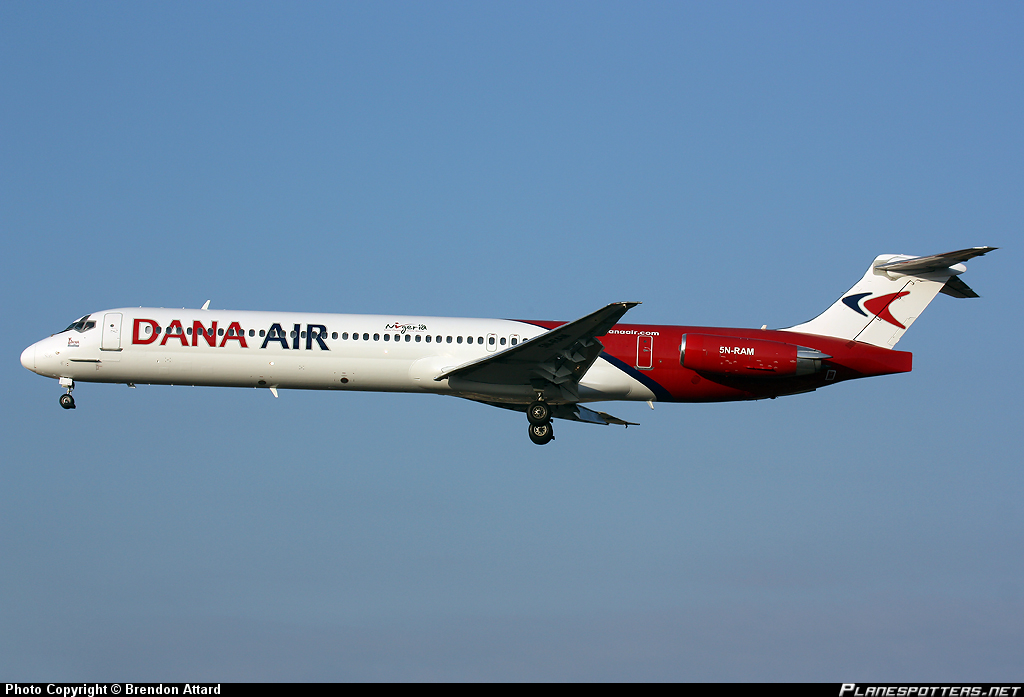
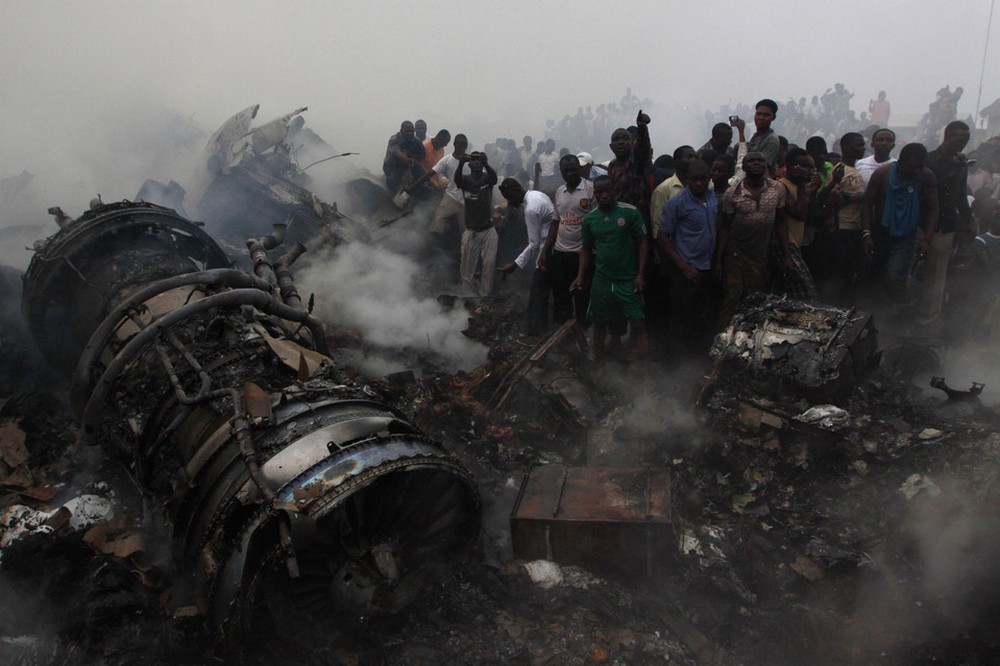
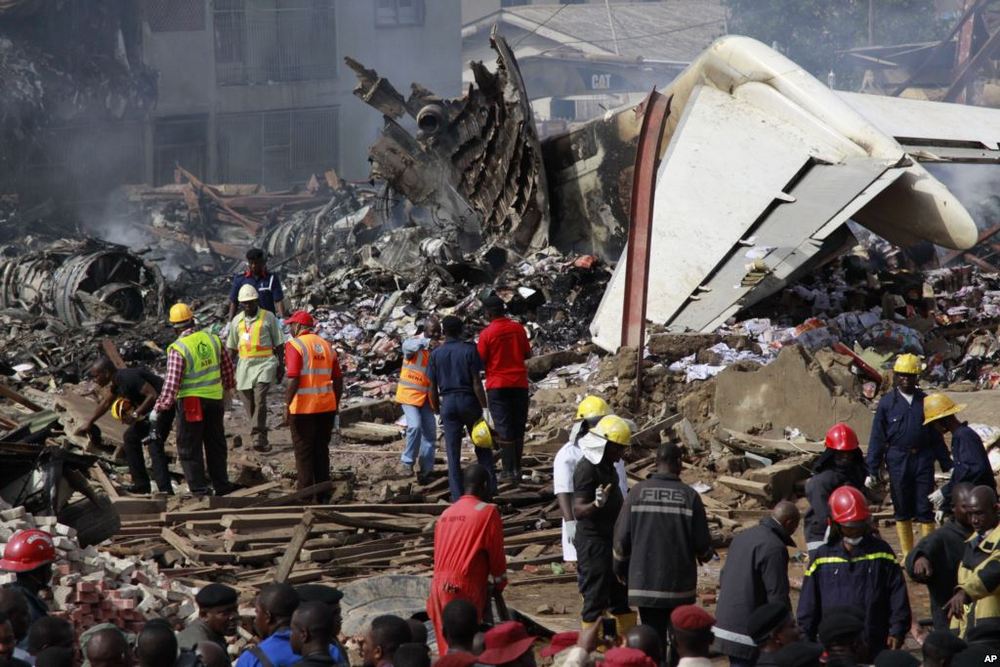

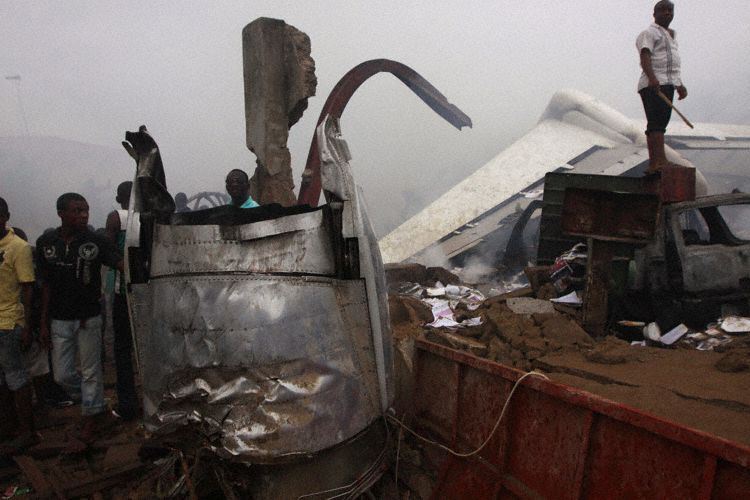
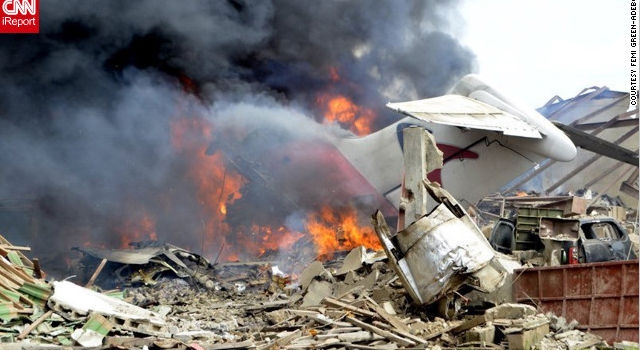

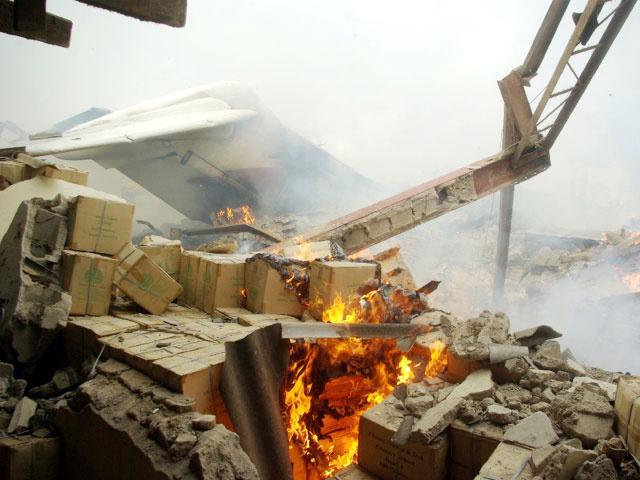
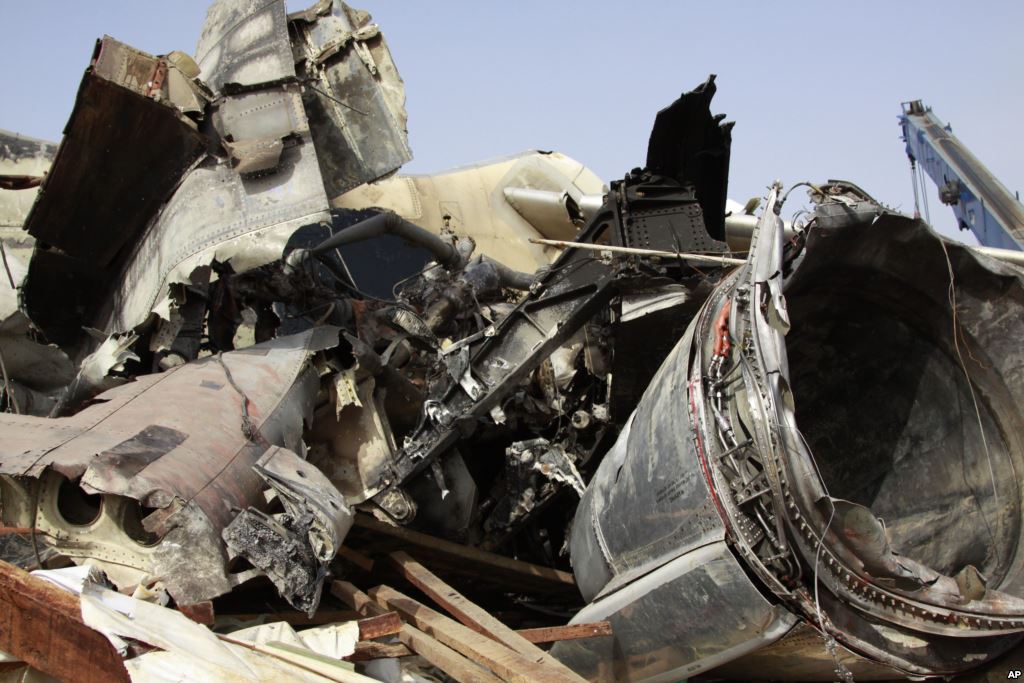
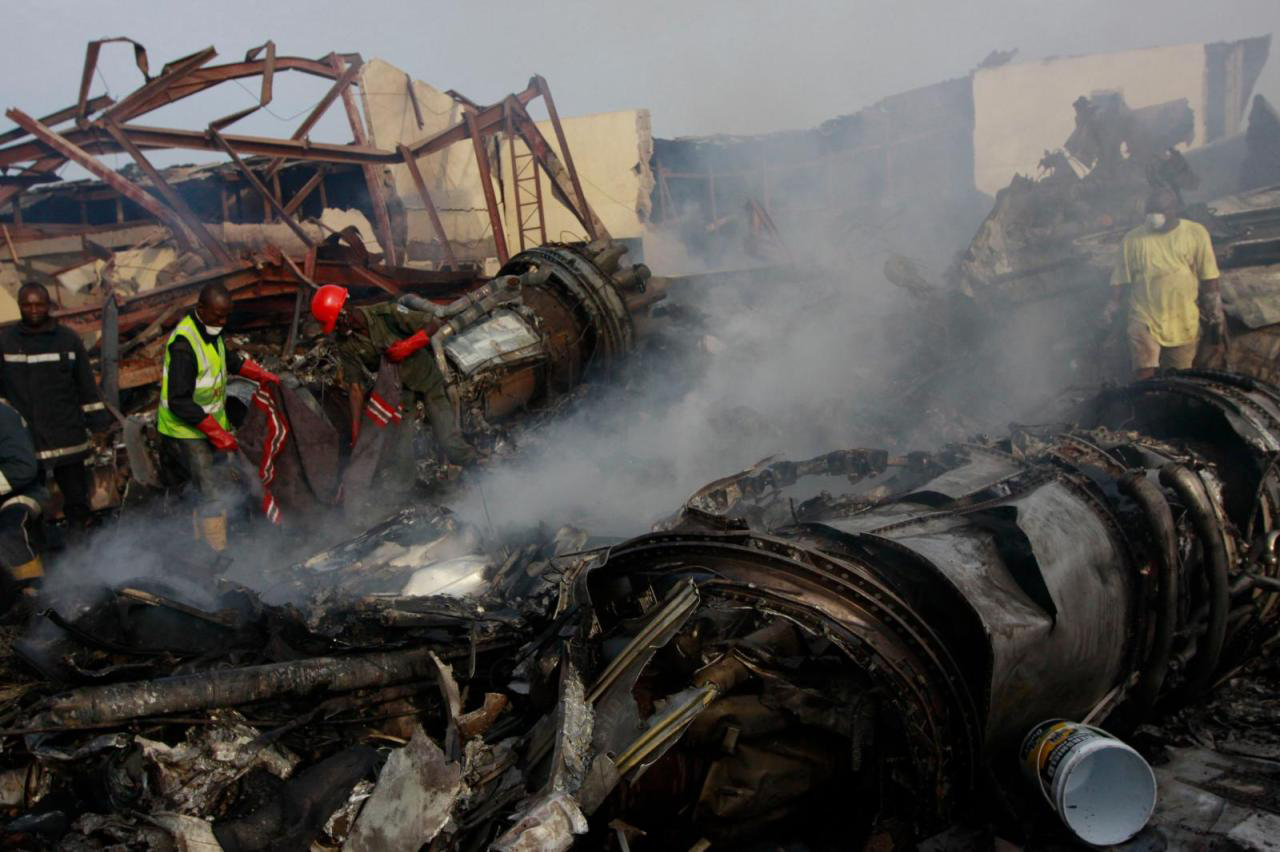
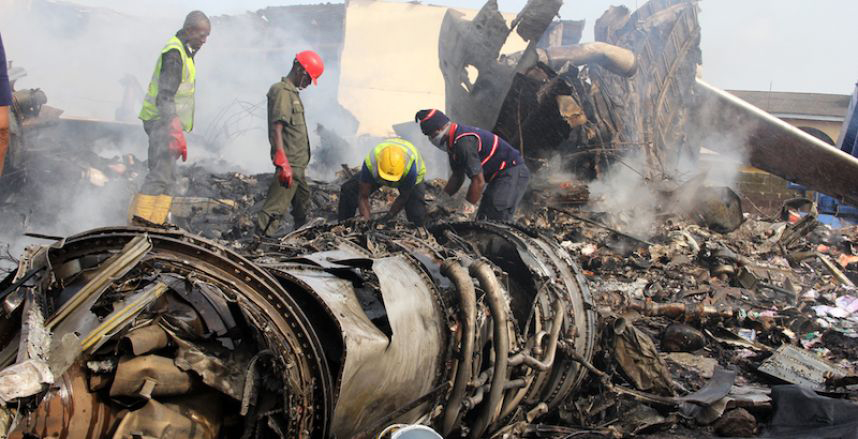
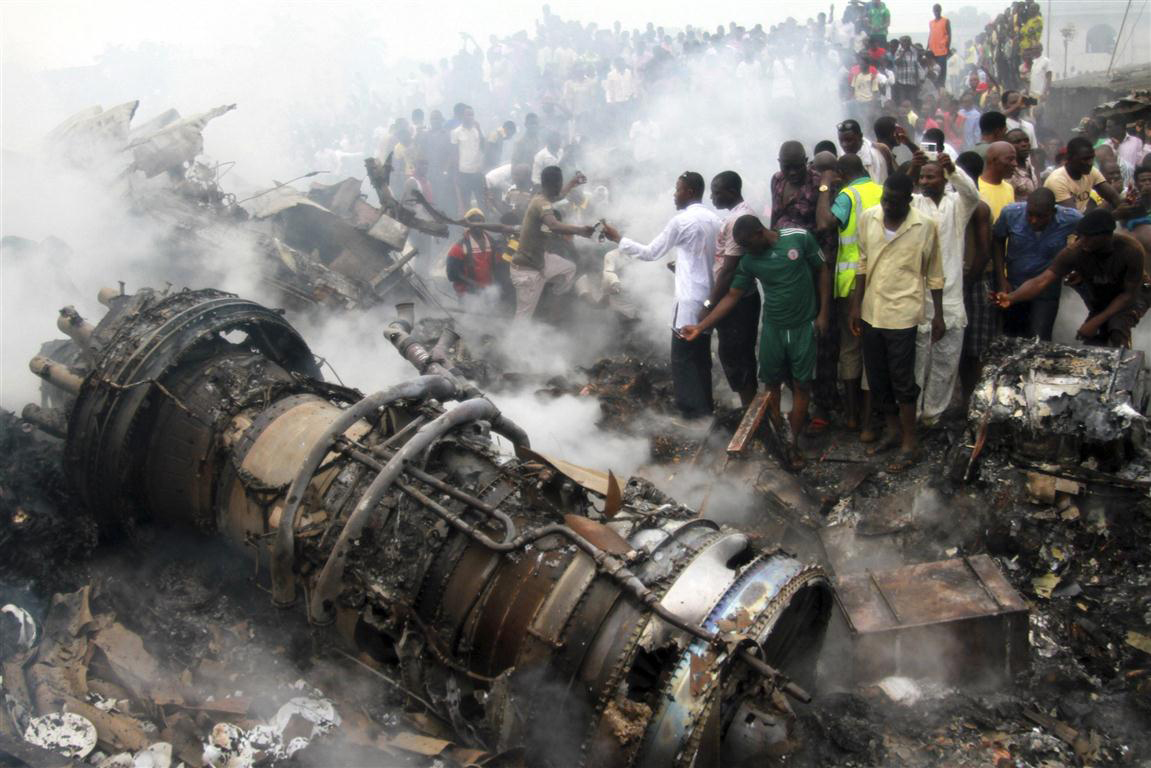
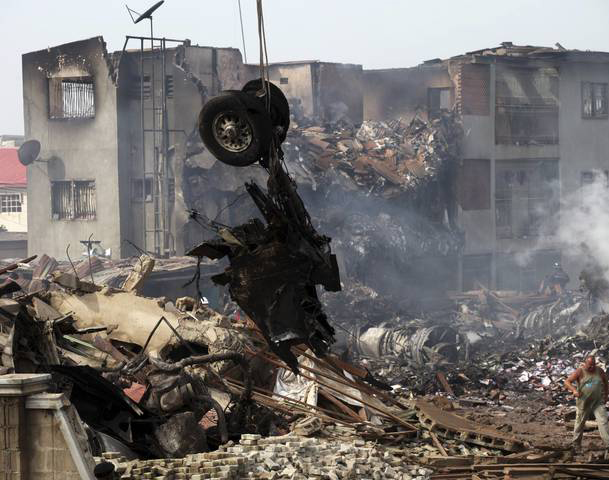
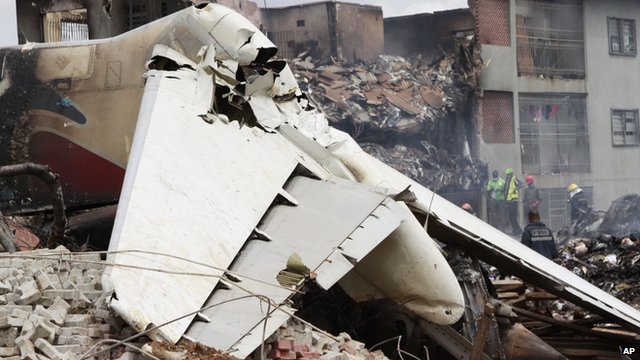
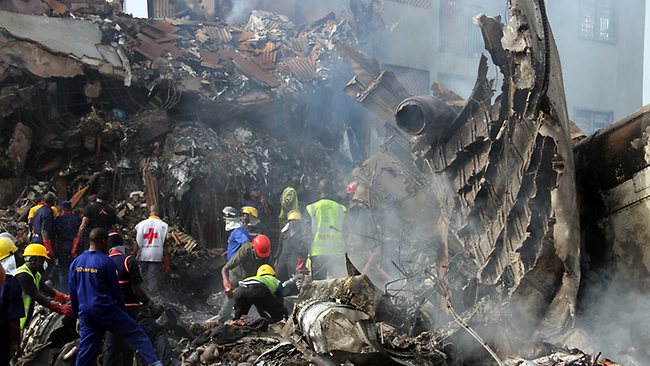
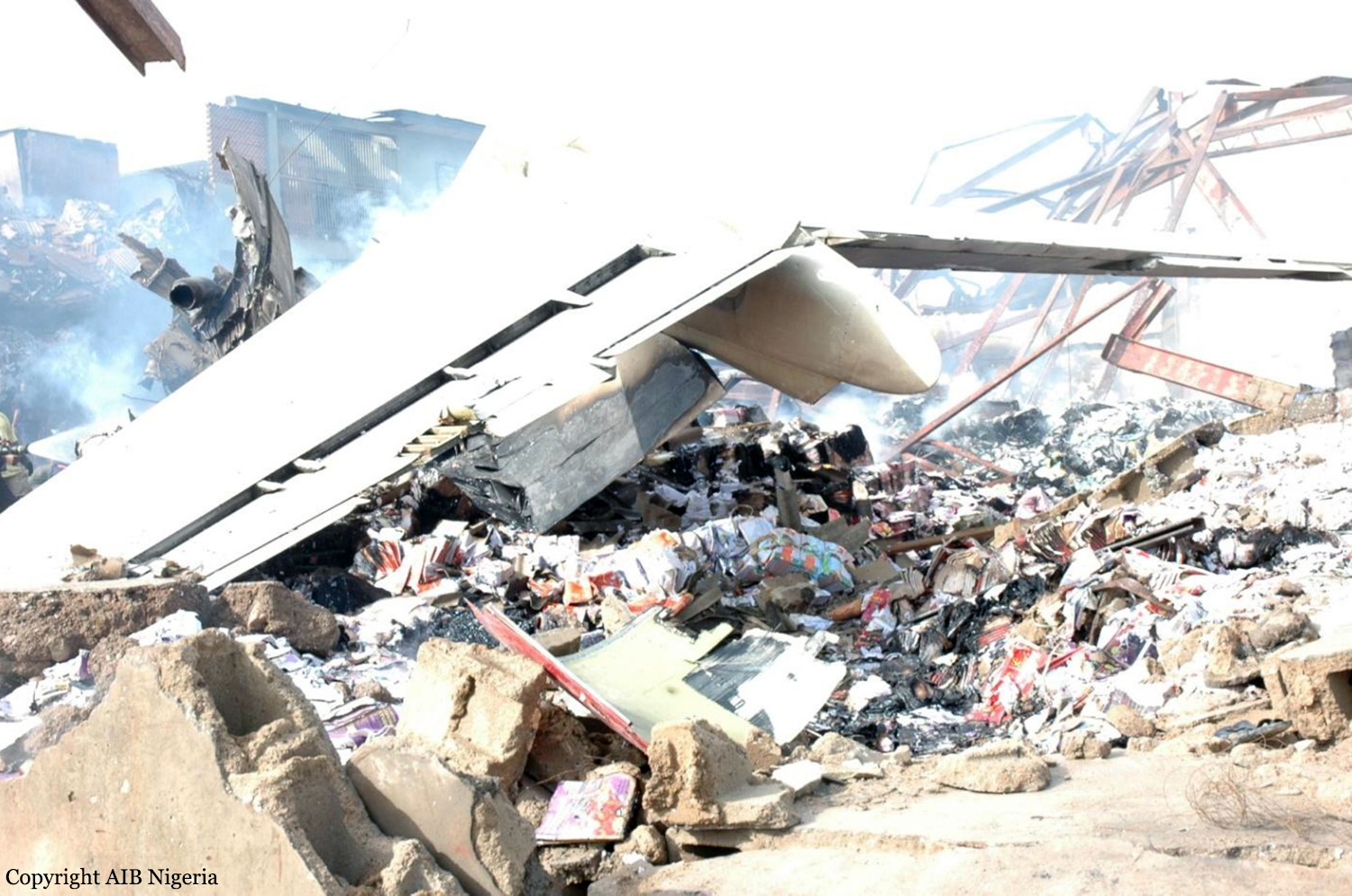
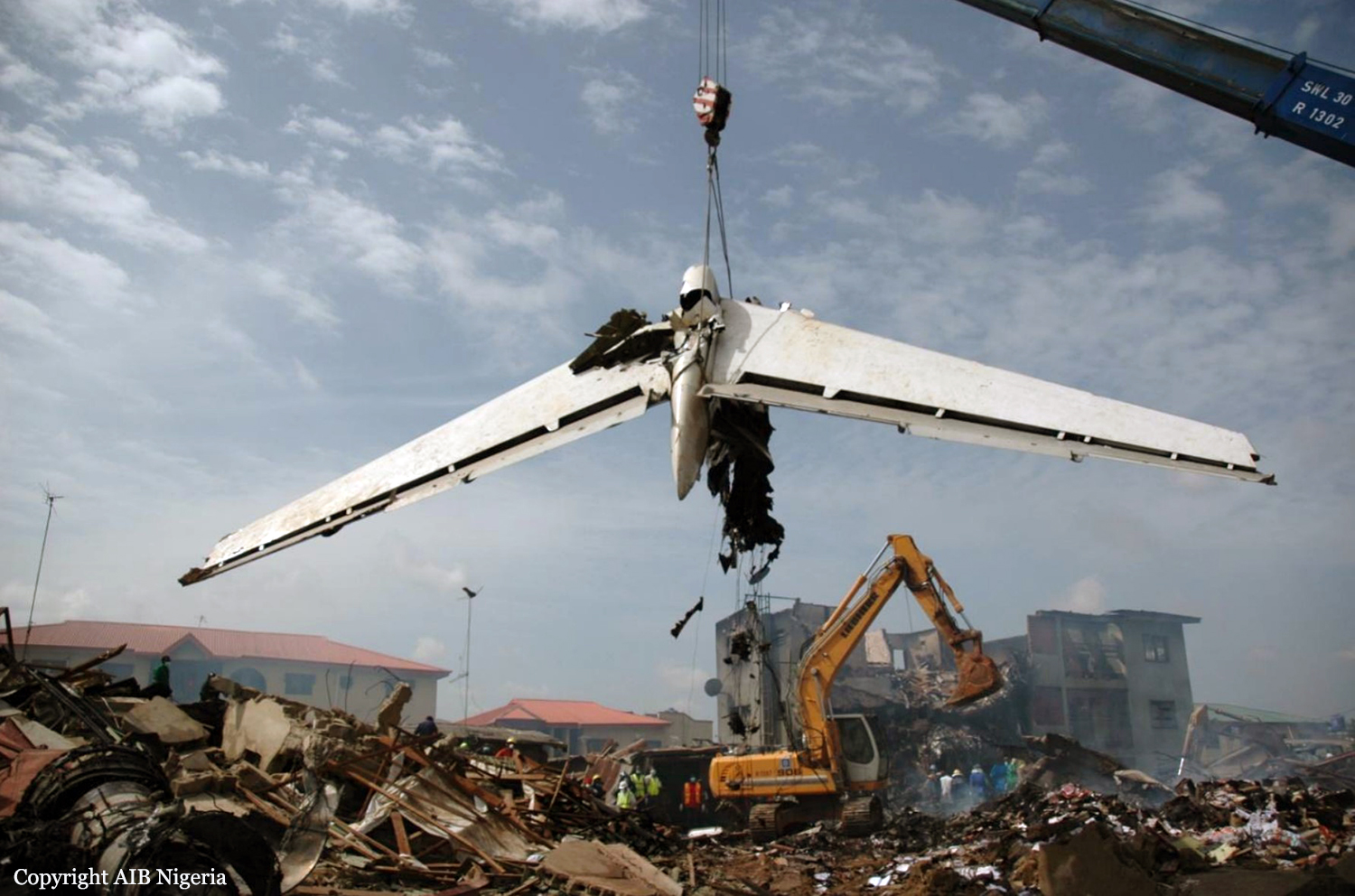
Crash of a McDonnell Douglas MD-83 in Kandahar
Date & Time:
Jan 24, 2012 at 0828 LT
Registration:
EC-JJS
Survivors:
Yes
Schedule:
Dubai - Kandahar
MSN:
49793/1656
YOM:
1989
Flight number:
SWT094
Crew on board:
5
Crew fatalities:
Pax on board:
86
Pax fatalities:
Other fatalities:
Total fatalities:
0
Captain / Total hours on type:
3228.00
Copilot / Total hours on type:
2222
Circumstances:
On Tuesday, 24 January 2012, a McDonnell Douglas MD-83, registration EC-JJS and operated by Swiftair, took off from the Dubai Airport (United Arab Emirates) at 02:08 UTC on a scheduled flight to the Kandahar Airport (Afghanistan). Its callsign was SWT094 and there were 86 passengers (one of them a company mechanic), three flight attendants and two cockpit crew onboard. Swiftair, S.A. was operating this regularly scheduled passenger flight under an ACMI arrangement with the South African company Gryphon Airlines. The crew was picked up at its usual hotel in the emirate of Ras al-Khaimah (United Arab Emirates) at 21:00. The airplane was parked in the Ras al-Khaimah airport and had to be flown empty to the Dubai Airport. This flight departed at 00:20 UTC en route to Dubai. Once there, an agent for Gryphon Airlines gave the crew the documentation for the flight to Kandahar. They went through customs at the Dubai Airport, boarded the passengers and the cargo and refueled the airplane with enough fuel to make the return the flight, a typical practice so as to avoid refueling in Kandahar. The airplane took off from runway 30R at the Dubai Airport at 02:08 on standard instrument departure RIKET2D and climbed to flight level FL290. The first officer was the pilot flying. At 03:42, while over SERKA, they were transferred to Kabul control, which instructed them to descend to FL280. The crew reported its ISAF callsign (ISF39RT) to this ATS station, which allowed the aircraft to fly over Afghan airspace, and entered the new stipulated squawk code. Kabul Control instructed the crew to follow some radar vectors that took them to point SODAS, where they were transferred to Kandahar Control at 03:46. The crew reduced the airspeed to 250 kt above this point. Kandahar Control cleared them for an RNAV (GPS) approach to runway 05, providing a direct vector to point FALOD (the IAF), and to descend to 6,000 ft. The weather information provided on the ATIS “F” broadcast was runway in use 05, wind from 060º at 17 kt gusting to 24 kt, visibility 1,200 m, scattered clouds at 2,700 ft and broken clouds at 3,000 ft, temperature 1 ºC, dewpoint -7 ºC and QNH 30.06 in Hg (1,018 mbar). This information was practically the same as that radioed to the crew by the Kandahar control tower a few minutes before landing: wind from 060 at 15 kt gusting to 21 kt. They reached point FALOD (IAF) under cloud cover (and thus in IMC conditions). They did not exit the clouds until 1,500 ft before minimums which, for this approach, according to the associated chart, was an altitude of 3,700 ft, or 394 ft AGL. They established visual contact with the runway 500 ft above minimums and noted that they were a little right of the runway centerline. Since the captain had more operational experience at the destination airfield, he decided to take over the controls and fly the last phase of the approach maneuver. The PAPI was out of service, meaning that in final approach they only had visual references to the runway and over the ground. During short final they corrected the deviation from the runway centerline by adjusting their path from right to left. They landed at 03:58. During the flare, the crew noticed the airplane was shifting to the left, threatening to take them off the runway, as a result of which the captain applied a right roll angle. This caused the right wing tip to strike the ground before the wheels made contact with the ground. The captain regarded the maneuver as a hard landing, although the first officer thought they might have struck the runway. The autopilot was engaged until visual contact was established with the runway and the auto-throttle until the landing. On exiting the runway, the airport control tower personnel (who had witnessed the contact with the ground) ordered the crew to stop and informed them of the damage they had seen during the landing. They dispatched the emergency services (firefighters), which forced them to turn off their engines. Once it was confirmed that there was no fuel leak or damage to the wheels or brakes, they allowed the crew to restart the engines and proceed to the stand. The wing made contact with the ground some 20 m prior to the threshold, resulting in five threshold lights being destroyed by the aircraft and in damage to the aircraft’s right wing. According to the crew’s statement, the passengers were not really aware of the contact between the wing and the ground and they were subsequently disembarked normally.
Probable cause:
The accident was likely caused by the failure to observe the company's operating procedures and not executing a go-around when the approach was clearly not stabilized. Moreover, the operator lacked the authorization (and the crew the training) to carry out the RNAV (GPS) approach maneuver that was conducted at RWY 05 of the Kandahar Airport.
Contributing to the accident was:
The inoperable status of the PAPI at runway 05 of the Kandahar Airport, which was thus unable to aid the crew to establish the aircraft on the correct descent slope.
Contributing to the accident was:
The inoperable status of the PAPI at runway 05 of the Kandahar Airport, which was thus unable to aid the crew to establish the aircraft on the correct descent slope.
Final Report:






